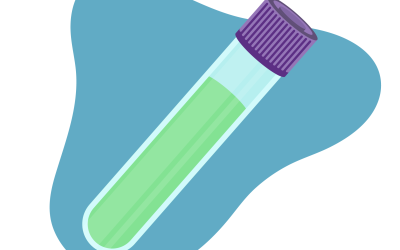5 Laboratory Billing Metrics Your Lab Should Track

A clinical laboratory’s success is dependent upon the transparency of its financial performance in common, but critical, laboratory billing metrics. Without an idea of the facility’s performance in terms of billing and collections, labs can quickly experience huge losses.
Access to accurate, updated measurements of your lab’s billing and collections is crucial for daily operations. Understanding these laboratory billing metrics, or key performance indicators (KPIs), can reveal the status of a laboratory’s overall success. They also keep labs on track with setting and meeting financial goals, or preventing downward trends in performance and profit.
Clean Claim Rate
A Clean Claim Rate is typically defined as the rate at which insurance claims are successfully processed upon initial submission with no errors, denials, or need for additional information.
Having a high clean claim rate indicates to insurance providers that the data you are collecting is high quality. It also shows that claim accuracy is something healthcare providers are paying attention to on the front end. If you submit a clean claim, it spends less time in accounts on the payer’s end. This results in faster payments back to your lab.
Most industry leaders and experts agree that the ideal clean claim rate is 95% and above. Anything below this rate will increase your costs and hurt your lab’s earning potential. Achieving and maintaining this rate may prove difficult to labs with in-house billing departments.
Bad Debt Rate
Bad Debt Rate is calculated by dividing allowed charges by bad debt write-offs. In other words, this KPI indicates the charges that are no longer deemed recoverable and must be written off or turned over to a collections agency.
Laboratories face many factors that contribute to their Bad Debt Rate throughout the laboratory billing cycle, but common mistakes include untimely filing, unclear payment policies for patients, inefficient systems and processes, or poor patient support services.
Average Time in Accounts Receivable
Dividing a lab’s ending accounts receivable by the average daily charge provides the calculation of their average time (in days) in accounts receivable (A/R). This reveals how long it takes, on average, for the laboratory to receive full payment for the services rendered.
Challenges that laboratorys face in A/R management inherently translate to loss in overall revenue collection. Automation technology provided by the best revenue cycle management companies can help reduce time in A/R over 60 days by 38% within three months on average.
Gross Collection Rate
You calculate the Gross Collection Rate by dividing collections by the billed charges. It’s a useful measurement to make comparisons of your laboratory’s cash flow.
By studying the fluctuations, you can get a better idea of what future collections will be like. Changes in patient population, fees, testing menu, and payer mix will always affect the gross collection rate.
Month-Over-Month Revenue
Month-over-month metrics track collections according to payers, tests, and providers.
Visibility into these individual groupings helps identify what tests have more issues in getting reimbursed, which payers the lab is struggling with, what providers are most profitable, and generally what areas of of the lab are available for improvement.
Labs can also use this metric to identify their areas of value and how to expand on their specialties.
Improve Your Lab’s Performance with Phytest’s Complete Reporting and Services
Improving financial literacy and understanding can help laboratory directors, supervisors, and financial officers make better decisions on the direction and growth of their lab. Phytest aids laboratories by providing complete financial transparency into their facility’s performance with detailed, accurate, real-time reporting on these 5 laboratory billing metrics and more. Our full-service revenue cycle management equips labs with the necessary reporting and information to identify growth opportunities and maximize profitability in addition to all billing and collection services. Additionally, our U.S. based patient service team provides exceptional customer service to the patients of your customers.
Contact our team of experts today to see how Phytest can partner with you to expand your lab’s capability for growth and increase collections.
STAY UPDATED ON NEWS & BLOGS
Ready to grow your lab?
FOLLOW US
Read Our Latest Posts
Cigna Announces Rollback of Prior Authorization Requirements
Cigna has taken a significant step towards simplifying the healthcare process by eliminating prior authorization requirements for 25 medical procedure codes. This decision is in line with Cigna's ongoing efforts to enhance patient care and reduce administrative...
Why Patients Aren’t Paying Your Lab Tests and How to Fix It
The medical laboratory billing process is an essential piece in effectively managing and growing a laboratory. Without giving proper attention to setting up an efficient billing environment before laboratories send claims out, patients are increasingly being driven...
Navigating the Eligibility Process in Laboratory Billing: A Comprehensive Guide
Determining patient eligibility for laboratory services has become a complex task for laboratories to handle as payer requirements shift constantly. Accurate eligibility verification ensures seamless billing procedures, reduces claim denials, and ultimately improves...






